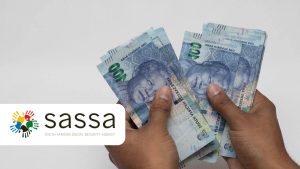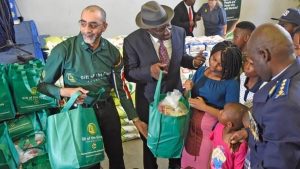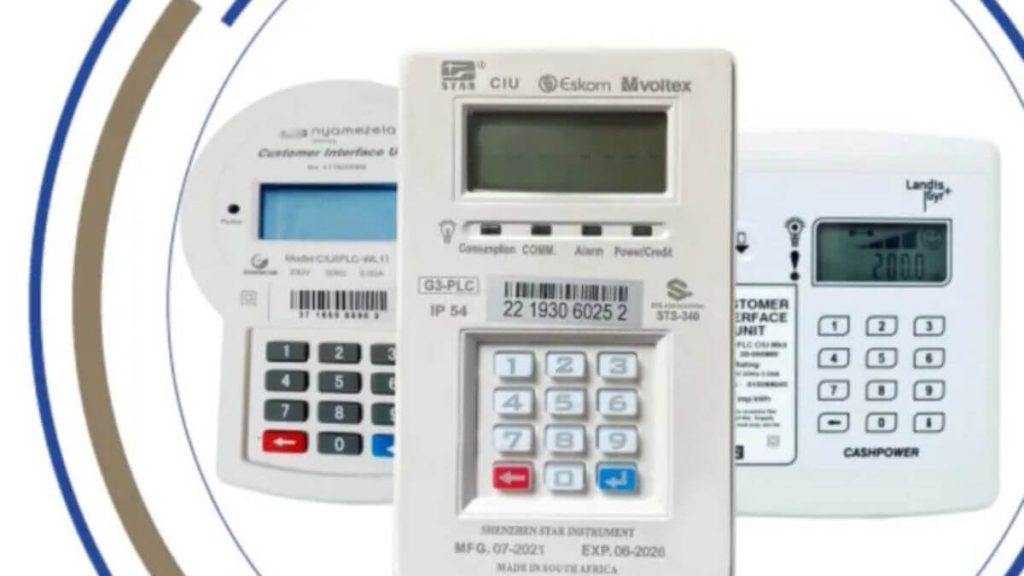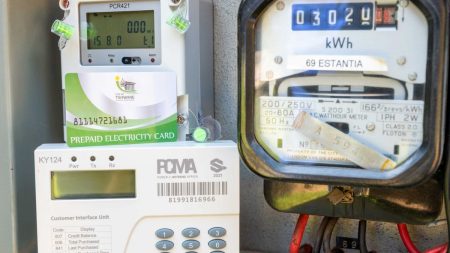Electricity remains one of the biggest monthly expenses for South African households. With rising tariffs, frequent load-shedding, and the broader cost of living crisis, families across the country are struggling to keep their lights on. For low- and middle-income households, a subsidy or Free Basic Electricity (FBE) allocation is often the difference between a manageable bill and a looming disconnection.
Yet many South Africans remain uncertain about where they should apply for help. Should you go to Eskom directly, or does your local municipality handle subsidies? The answer depends entirely on who supplies your electricity — and that is where confusion often arises.
In October 2025, the Department of Mineral Resources and Energy (DMRE), along with Eskom and municipalities, updated their policies for Free Basic Electricity and indigent household subsidies. These updates introduced new income thresholds, digital application options, and clearer guidelines on eligibility for prepaid and post-paid users. However, navigating the system is still overwhelming for many families, particularly in rural municipalities, urban townships, and informal settlements.
Understanding the Difference Between Eskom and Municipal Billing
Before you can apply for a subsidy or Free Basic Electricity (FBE) units, you first need to know who supplies your electricity. In South Africa, households typically receive electricity either directly from Eskom, the national power utility, or through their local municipality.
Although both deliver electricity, the way they bill, manage customer accounts, and process subsidies is different. This distinction is crucial, because applying to the wrong place will only waste your time.
Eskom Supply
Eskom is the largest power supplier in South Africa and covers vast areas, especially in rural provinces, mining towns, and some townships. If you buy electricity directly from Eskom, you either:
Use a prepaid meter (where you load units through tokens or vouchers), or
Receive a monthly Eskom bill sent to your address.
For Eskom customers, subsidies like Free Basic Electricity are managed centrally by Eskom. Applications are usually processed through Eskom’s online system, regional walk-in centres, or call centre support.
Municipal Supply
Municipalities act as intermediaries. They purchase electricity from Eskom in bulk and then resell it to residents and businesses in their jurisdiction. Large metros like Johannesburg, Tshwane, Cape Town, eThekwini, and Nelson Mandela Bay fall into this category.
If you live in these areas, your electricity account comes from the municipality, not Eskom. This means you must apply for indigent status or subsidies through your local municipal offices or community service centres.
Municipal supply is common in:
Urban areas: Cities, suburbs, and townships under metro control.
Smaller towns: Where local municipalities manage electricity distribution.
Why the Difference Matters
The most common frustration for households is being sent back and forth between Eskom and municipalities. Many residents queue at municipal offices only to be told they are Eskom customers, while others try Eskom’s call centre but are redirected to their municipality.
To avoid this, always check:
Who issued your bill or meter slip.
What logo appears on your prepaid purchase slip.
Which customer service number is printed on your receipt.
Billing & Service Comparison
| Feature | Eskom Supply | Municipal Supply |
|---|---|---|
| Billing | Direct Eskom bill or prepaid token | Municipal bill or prepaid token via municipality |
| Subsidy/FBE Application | Apply at Eskom walk-in centres, online portal, or via call centre | Apply at local municipal offices, indigent desks, or online municipal portals |
| Service Area | Rural areas, mining towns, some townships | Metros, urban municipalities, small towns |
| Decision-Maker | Eskom indigent/FBE policy | Municipal indigent/FBE policy (based on national guidelines) |
| Example | Prepaid meter shows “Eskom” | Prepaid slip shows “City of Johannesburg” |
Key Takeaway
If you are supplied directly by Eskom, your subsidy application must go through Eskom. If you are supplied by your municipality, your application must be submitted to your municipal indigent office. Getting this distinction right saves time, avoids frustration, and ensures your household gets the support it is entitled to.
What is Free Basic Electricity (FBE)?
For many South African households, the concept of Free Basic Electricity (FBE) is not always clear, even though it has been part of national policy for over two decades. Introduced in 2003, the programme was designed to provide poor households with a limited amount of electricity every month at no charge. This subsidy helps ensure that even the most vulnerable families can meet basic energy needs, such as lighting, cooking, and heating water.
The Purpose of FBE
The goal of FBE is to protect low-income households from complete energy exclusion. With electricity prices rising sharply each year, the programme acts as a social safety net, ensuring that families are not forced into unsafe alternatives like paraffin or firewood, which often carry health and fire risks.
How Much Free Electricity Do You Get?
As of October 2025, qualifying households typically receive 50 kWh of free electricity per month. In some municipalities, this amount may be higher — up to 100 kWh — depending on local policy and budget allocations. These units are automatically loaded if you are registered as an indigent household or have been approved under Eskom’s or your municipality’s subsidy scheme.
Who Qualifies for FBE?
Eligibility for FBE depends on your household income and status:
Indigent households: Families earning below a set income threshold (updated annually).
Pensioner households: Some municipalities automatically register pensioner-headed households.
Tenants in informal or backyard dwellings: Eligibility may apply if the household meets the income requirements and has a registered prepaid meter.
Special cases: Households with members requiring electricity for medical equipment may receive additional allocations.
In October 2025, the national indigent threshold was adjusted to R4,200 household income per month, though individual municipalities may set higher or lower thresholds depending on their budgets.
National Policy vs Local Implementation
Although FBE is a national programme, it is implemented locally. That means Eskom handles applications for its direct customers, while municipalities manage applications for residents they supply. This difference often creates confusion, but the rule is simple:
If your electricity comes from Eskom, apply through Eskom.
If your electricity comes from your municipality, apply through municipal indigent offices.
Why Registration is Crucial
You don’t automatically receive FBE just because you are poor or use prepaid electricity. You must be registered either with Eskom or your municipality. Once approved, your monthly free units are added directly to your meter or deducted from your bill.
Key takeaway: FBE is not a once-off voucher — it is a monthly right for qualifying households. Registering ensures consistent access to free units and protection against sudden disconnections.
How to Check Who Supplies Your Electricity
One of the biggest sources of confusion for households is knowing whether Eskom or the municipality supplies their electricity. This distinction is critical, because it determines where you must apply for Free Basic Electricity (FBE) or other subsidies. Fortunately, there are clear ways to check.
1. Look at Your Prepaid Slip or Token
If you use a prepaid meter, the slip or SMS token will show the name of your supplier:
If it says “Eskom”, you are supplied directly by Eskom.
If it says “City of Johannesburg”, “City of Tshwane”, “eThekwini Municipality”, or another municipal name, then your municipality is the supplier.
This is the quickest way for prepaid users to confirm their supplier.
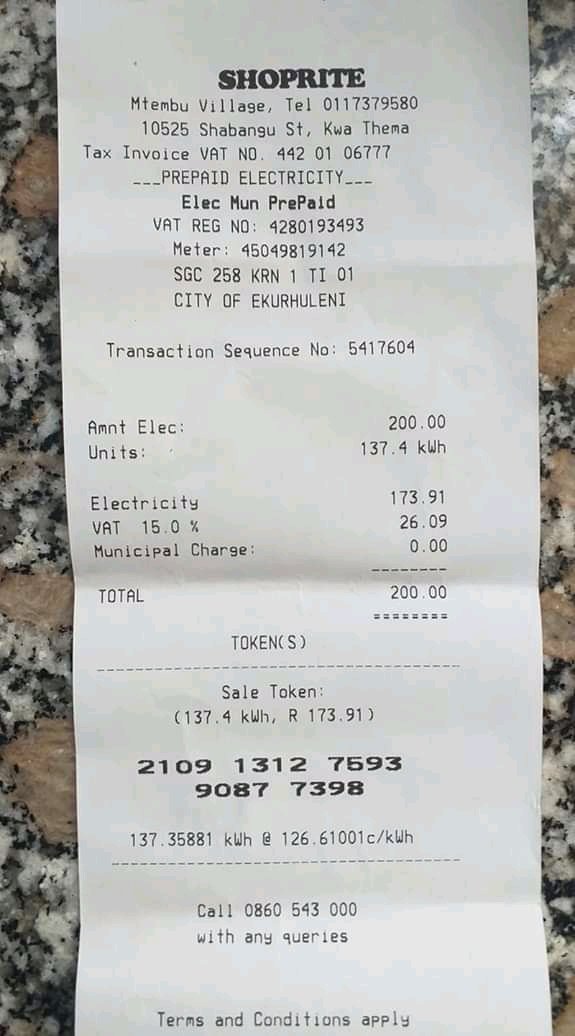
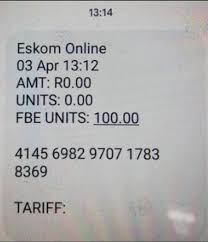
2. Check Your Monthly Bill
For households on post-paid accounts, the monthly electricity bill will clearly show whether it comes from Eskom or the local municipality. Eskom bills usually carry the Eskom logo and are issued centrally, while municipal bills often combine electricity with water, refuse, and property rates.
3. Ask Your Landlord or Property Manager
If you are a tenant, particularly in a flat or a backyard dwelling, the electricity may be bundled with your rent or managed through the landlord’s account. In such cases, confirm with the landlord whether the property is billed directly by Eskom or the municipality. This will guide you on how to apply for subsidies.
4. Use Online Portals
Both Eskom and most large municipalities provide online portals or apps where you can log in with your account or meter number. These portals show the supplier details, your consumption history, and any subsidies applied.
Eskom My Customer Portal: https://www.eskom.co.za
City of Johannesburg e-Services: https://eservices.joburg.org.za
Similar services exist for Tshwane, eThekwini, and Cape Town.
5. Visit a Customer Service Desk
If you are still unsure, visit the nearest Eskom walk-in centre or your local municipal customer service office. Take your ID and a copy of your latest prepaid slip or bill with you — this will help the staff confirm your supplier and direct you to the correct subsidy application point.
Applying for an Eskom Subsidy or FBE
If your electricity comes directly from Eskom, you cannot apply for subsidies or Free Basic Electricity (FBE) through your municipality. Eskom has its own system for processing applications, and households must go through Eskom’s channels to receive support. Here’s everything you need to know.
Step 1: Confirm You Are an Eskom Customer
Before applying, double-check your electricity supplier. Look for “Eskom” on your prepaid slip or on your bill. If Eskom is your supplier, then you are eligible to apply directly through them.
Step 2: Understand What Eskom Offers
Eskom provides two main forms of household relief:
Free Basic Electricity (FBE): Qualifying indigent households get 50–100 kWh free units every month, depending on government policy and area.
Indigent Household Subsidy: This is for households earning below the national threshold (R4,200 per month in October 2025). It allows you to access FBE and, in some cases, additional rebates on electricity costs.
Step 3: Prepare the Required Documents
To avoid delays, make sure you have the following documents ready:
A certified copy of your South African ID.
Proof of residence (such as a lease agreement, municipal letter, or affidavit if living in an informal settlement).
Proof of income (payslip, SASSA card, or affidavit of unemployment).
Your Eskom account number or prepaid meter number.
An indigent household declaration form (available at Eskom offices or online).
Step 4: Submit Your Application
You can apply in three main ways:
a) Eskom Walk-in Centres
Visit your nearest Eskom regional office or walk-in centre. You’ll need to complete the indigent household registration form and hand in your supporting documents.
Examples of Eskom Walk-in Centres:
Johannesburg Regional Office
1 Maxwell Drive, Sunninghill, Sandton, Gauteng
Google Maps LinkKwaZulu-Natal Regional Office
25 Valley View Road, New Germany, Durban
Google Maps Link
b) Online Portal
Eskom customers can register online through the Eskom Customer Portal:
👉 https://www.eskom.co.za
The online system allows you to upload scanned documents, register your household, and track your application.
c) Call Centre Support
If you cannot travel or access the internet, you can phone Eskom’s contact centre:
Toll-Free Number: 08600 37566 (Eskom’s 24-hour helpline).
The agent will guide you on completing the process and may direct you to your nearest office.
Step 5: Application Review
Eskom will review your documents and verify your income status. This process may take a few weeks. If approved, your household will automatically start receiving FBE units each month. These will show up as free tokens when you load electricity or as a deduction on your bill.
Step 6: Renewal and Monitoring
Most indigent registrations are valid for 12 months. After that, you may need to reapply or submit updated proof of income. Keep your details up to date to avoid being deregistered.
Extra Notes for Eskom Customers
Prepaid users: Your free units are loaded automatically when you buy electricity. For example, if you buy R50 worth of electricity, you may see additional free kWh on the receipt.
Post-paid users: FBE shows up as a discount line on your monthly statement.
Special cases: Households with disabled or elderly members who require electricity for medical equipment can request additional support.
Applying for a Municipal Subsidy or FBE
If your household receives electricity through a municipality, you cannot apply for Free Basic Electricity (FBE) or indigent subsidies through Eskom. Instead, applications must be submitted to your local municipal offices, indigent desks, or online portals (if available). Each municipality has its own processes, but the requirements are similar.
Step 1: Confirm You Are a Municipal Customer
Look at your prepaid slip or monthly bill. If it shows City of Johannesburg, City of Tshwane, Cape Town, eThekwini, Nelson Mandela Bay, or any other municipality name, then your municipality is the supplier.
Bills often combine electricity with water, sanitation, and refuse removal. That’s a clear sign you are billed by the municipality.
Step 2: Know What Municipal Subsidies Include
Municipalities provide the following to indigent households:
Free Basic Electricity (FBE): Usually 50–100 kWh per month, depending on local budgets.
Rebates on municipal services: Some municipalities also give discounts on water, refuse, or property rates to registered indigent households.
Additional support programmes: Pensioner households and residents with medical needs (such as home dialysis machines) may receive extra relief.
Step 3: Gather Your Documents
Most municipalities require the following:
Certified copy of your South African ID.
Proof of residence (such as a municipal account, lease, or affidavit from your ward councillor).
Proof of income (payslips, SASSA card, or affidavit of unemployment).
Household details (number of dependents, household income).
Completed municipal indigent application form.
Step 4: Submit Your Application
There are three ways to apply through your municipality:
a) In-Person Applications
Visit your local municipal customer service centre or indigent office. Take all supporting documents and complete the application form.
Examples of Major Municipal Offices:
City of Johannesburg – Customer Service Centre
61 Jorrissen Street, Braamfontein, Johannesburg
Google Maps LinkCity of Tshwane – Customer Care Walk-In
225 Pretorius Street, Pretoria Central
Google Maps LinkCity of Cape Town – Municipal Offices
44 Wale Street, Cape Town CBD
Google Maps Link
b) Online Portals
Many metros now allow online indigent registration. Examples include:
City of Johannesburg: https://eservices.joburg.org.za
City of Tshwane e-Services: https://www.tshwane.gov.za
City of Cape Town e-Services: https://www.capetown.gov.za
c) Community Help Desks
Some municipalities set up indigent registration desks at ward councillor offices, community halls, or during outreach campaigns. These are particularly common in informal settlements and rural areas.
Step 5: Application Review
The municipality verifies your documents and income declaration. Once approved, your household is registered as indigent. The benefits (such as free electricity units) are automatically applied to your account or prepaid meter each month.
Step 6: Renewal
Municipal indigent registrations are typically valid for one year. Households must reapply annually or provide updated proof of income. If your circumstances improve and you no longer qualify, you must notify the municipality.
Notes for Tenants and Informal Dwellers
Backyard tenants: You may still qualify if you have your own registered prepaid meter.
Shared meters: If multiple households share a single meter, only one application may be allowed. Some municipalities handle this by giving the registered account holder the subsidy.
Informal settlements: In areas without formal billing, municipalities may provide alternative subsidies such as free paraffin, vouchers, or solar kits under the FBE framework.
Key takeaway: If your electricity comes from a municipality, you must apply through municipal indigent desks or online portals. Each metro has slightly different rules, but all require proof of income, residence, and household details.
October 2025 Policy Updates
Every year, government and municipalities review their indigent policies and the Free Basic Electricity (FBE) framework. In October 2025, a number of important updates were announced, directly affecting how households qualify and apply for subsidies.
1. New Income Thresholds
The Department of Mineral Resources and Energy (DMRE) raised the indigent income threshold to R4,200 per household per month. This means more low- and middle-income families now qualify for subsidies. Some metros, like Cape Town and eThekwini, have chosen to adopt slightly higher limits (R4,500–R5,000) to reflect local living costs.
2. Expanded Digital Applications
To reduce queues at service centres, both Eskom and major metros have rolled out new digital channels for applications:
WhatsApp-based services: In Johannesburg and Tshwane, households can now submit indigent applications and upload documents directly via municipal WhatsApp numbers.
Eskom online system upgrade: Eskom has streamlined its portal to allow document uploads via smartphones, making it easier for rural households without computers.
SMS tracking services: Applicants now receive SMS updates when their application is received, processed, or approved.
3. Improved Support for Prepaid Customers
Previously, many prepaid users were excluded or confused about how FBE was credited. From October 2025, Eskom and municipalities have introduced:
Automatic FBE top-ups to prepaid tokens once registration is approved.
Clearer token slips, showing how many free units were loaded each month.
Community campaigns in informal settlements to assist with registration drives.
4. Collaboration Between Eskom and Municipalities
For the first time, Eskom and local municipalities have agreed to share indigent household databases. This reduces duplication and ensures households don’t get excluded simply because their supply status changes. If a community switches from Eskom supply to municipal control (or vice versa), registered indigent households will be transferred automatically.
5. Priority Support for Vulnerable Households
The October 2025 policy update has also expanded eligibility for households with:
Elderly pensioners as primary residents.
Disabled family members requiring electricity for medical devices.
Families living in informal housing with registered Eskom prepaid meters.
These updates make subsidies more accessible and user-friendly, especially for prepaid users and households relying on mobile devices. If you last applied before October 2025, it’s worth re-checking your eligibility under the new rules.
Also check: Free Basic Electricity: Millions Eligible but Few Benefitin
Common Challenges & FAQs
Many South Africans face the same difficulties when applying for electricity subsidies. Here are the 10 most common questions, answered clearly:
1. Why was my subsidy or FBE application rejected?
Applications are usually rejected because of missing documents, submitting to the wrong supplier (Eskom instead of your municipality, or vice versa), or declaring a household income above the qualifying threshold. In some cases, expired or uncertified copies of IDs cause delays. Always submit certified documents and keep a copy of your application reference number.
2. Can tenants or backyard dwellers apply for Free Basic Electricity?
Yes. Tenants qualify as long as the prepaid meter or account is registered in their name. For backyard tenants, some municipalities require the landlord or a ward councillor to confirm the tenancy in writing. Shared meters can be tricky — often only the main account holder is eligible.
3. Do prepaid electricity users qualify for subsidies?
Yes. Prepaid customers are fully eligible. Once approved, your free units are automatically added when you purchase tokens. For example, if you buy R50 of electricity, your slip may show an extra 50 kWh credited for free. Always check your receipt to ensure the free units reflect.
4. How long does it take for Eskom or municipalities to approve my application?
Eskom: 2–4 weeks on average.
Municipalities: 4–8 weeks, depending on the workload and number of applications.
If your application takes longer, follow up using your reference number at the customer service desk or through the call centre.
5. What happens if my electricity supply changes from Eskom to my municipality (or the other way around)?
This can happen when municipalities take over areas previously serviced by Eskom. Since October 2025, Eskom and municipalities have started sharing indigent databases. This means your status should transfer automatically. However, you should still confirm with your new supplier to avoid gaps in receiving your free units.
6. Can I lose my subsidy if my income changes?
Yes. If your household income rises above the indigent threshold, your subsidy can be withdrawn. You can also lose it if you fail to renew your registration annually, or if you are found to have submitted false information. Always update your details honestly.
7. What documents do I need to apply for electricity subsidies or indigent status?
Typically, you’ll need:
Certified copy of your South African ID.
Proof of residence (bill, lease, or affidavit).
Proof of income (payslip, SASSA card, or affidavit).
Account or meter number.
Completed indigent registration form.
Some municipalities may also ask for dependents’ birth certificates or a medical certificate if you require extra electricity for health reasons.
8. How do I know whether I should apply at Eskom or the municipality?
Check your prepaid slip or bill. If it says Eskom, you apply through Eskom. If it carries your municipality’s name (City of Johannesburg, Tshwane, Cape Town, etc.), you apply through the municipality. If unsure, take your latest receipt to the nearest customer service desk for confirmation.
9. What should I do if my application is delayed or I don’t get feedback?
Always keep your receipt or reference number. Use this to follow up in person or via the call centre. If there’s no response after repeated attempts, escalate through your ward councillor or community help desk. Municipal outreach campaigns sometimes resolve backlogs faster.
10. Are pensioners, disabled residents, or households with medical equipment eligible for extra support?
Yes. Households headed by pensioners, those with disabled members, or residents who need electricity for medical equipment (such as oxygen machines or dialysis) can qualify for additional support. Some municipalities grant higher free unit allocations in such cases. Be sure to include medical certificates or pensioner cards in your application.
Read more: How Much Free Basic Electricity You Could Get This October 2025 – See How Municipalities Decide
Navigating the process of applying for Free Basic Electricity (FBE) or subsidies in South Africa doesn’t have to be a complicated or frustrating experience. Understanding whether you receive electricity from Eskom or a municipality is the key to knowing where to apply. Remember, the process varies depending on your electricity supplier, but once you know who provides your power, you can move forward with confidence.
The October 2025 updates bring improved access, with new income thresholds, digital registration options, and collaboration between Eskom and municipalities to streamline the process for households. These changes make it easier for more South Africans to benefit from FBE and indigent subsidies, especially in informal settlements and rural areas.



